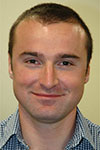Defining structural permeability in Australian sedimentary basins
Adam Bailey A , Rosalind King B , Simon Holford A , Joshua Sage C , Martin Hand D and Guillaume Backe EA The Australian School of Petroleum, The University of Adelaide
B School of Earth and Environmental Sciences, The University of Adelaide
C Beach Energy
D South Australian Centre for Geothermal Energy Research, The University of Adelaide
E BP London
The APPEA Journal 55(1) 119-148 https://doi.org/10.1071/AJ14010
Published: 2015
Abstract
Declining conventional hydrocarbon reserves have triggered exploration towards unconventional energy, such as CSG, shale gas and enhanced geothermal systems. Unconventional play viability is often heavily dependent on the presence of secondary permeability in the form of interconnected natural fracture networks that commonly exert a prime control over permeability due to low primary permeabiliy of in situ rock units. Structural permeability in the Northern Perth, SA Otway, and Northern Carnarvon basins is characterised using an integrated geophysical and geological approach combining wellbore logs, seismic attribute analysis and detailed structural geology. Integration of these methods allows for the identification of faults and fractures across a range of scales (millimetre to kilometre), providing crucial permeability information. New stress orientation data is also interpreted, allowing for stress-based predictions of fracture reactivation.
Otway Basin core shows open fractures are rarer than image logs indicate; this is due to the presence of fracture-filling siderite, an electrically conductive cement that may cause fractures to appear hydraulically conductive in image logs. Although the majority of fractures detected are favourably oriented for reactivation under in situ stresses, fracture fill primarily controls which fractures are open, demonstrating that lithological data is often essential for understanding potential structural permeability networks. The Carnarvon Basin is shown to host distinct variations in fracture orientation attributable to the in situ stress regime, regional tectonic development and local structure. A detailed understanding of the structural development, from regional-scale (hundreds of kilometres) down to local-scale (kilometres), is demonstrated to be of importance when attempting to understand structural permeability.

Adam Bailey completed his undergraduate studies in geology and geophysics at the University of Adelaide in 2011, graduating with first class Honours from the Australian School of Petroleum. In 2012 he commenced study towards a PhD at the Australian School of Petroleum, focusing on mapping natural fractures within energy-rich Australian basins. Adam was awarded the APPEA K.A. Richards scholarship in 2012 in support of his PhD thesis, titled The Australian structural permeability map. He has recently started as a graduate geoscientist with Geoscience Australia, where he is working in the Georgina Basin. Member: PESA and ASEG. |

Rosalind King completed her BSc (Hons) and PhD at the University of Liverpool in 2001 and 2005, respectively. Her PhD research involved investigation of the structural evolution in the Cape Fold Belt, South Africa. She worked as a post-doctoral researcher at the Australian School of Petroleum (University of Adelaide) from 2005–2010, studying the present-day stresses of northwest Borneo and delta-deepwater fold-thrust belts. Rosalind is a senior lecturer in the School of Physical Sciences (University of Adelaide) and her research includes the tectonics of deepwater fold-thrust belts, detachments, fold and thrust mechanics, petroleum geomechanics and fracture systems. |

Simon Holford is a senior lecturer at the Australian School of Petroleum, University of Adelaide, where he is co-leader of the Stress, Structure and Seismic Research Group. Simon has published around 50 papers and has received more than $2 million in research funding. His research interests encompass the formation and evolution of rifted margins, quantifying uplift, subsidence, structural permeability and contemporary stresses in the sedimentary basins, and the impacts of magmatic activity on petroleum systems. Simon has won numerous awards, including the 2012 APPEA Best Paper Award. He has a first class honours degree from Keele University and a PhD from the University of Birmingham. He is the incoming president of the SA/NT branch of PESA. Member: AAPG, AGU, GSA, GSL, PESA and PESGB. |

Joshua Sage graduated from the University of Adelaide in 2013 with a BSc (Hons) in geology and geophysics, and applied geology. He is now a graduate geoscientist with Beach Energy Ltd, working on projects in the onshore Otway Basin. Member: PESA and ASEG. |

Martin Hand is the Director of the South Australian Geothermal Research Centre. His research focuses on crustal thermal regimes, and the permeability characteristics of high heat flow regions. |

Guillaume Backé is a Senior Structural Geologist working for BP’s central geoscience technology team. His role involves providing structural and geomechanical expertise across the exploration and production value chain, as well as new well delivery. Prior to joining BP in 2012, Guillaume was a Lecturer of Petroleum Geology at the Australian School of Petroleum (University of Adelaide, Australia) where he taught undergraduate and postgraduate courses in structural geology, geomechanics, and seismic processing and interpretation, and led field courses. He graduated with a PhD in tectonics from the University of Pau (France) in 2006, with a dissertation on the tectonics of oblique orogens and foreland basin, focusing on the evolution of the Venezuelan Andes in Venezuela, and the Neuquén Basin in Argentina. Guillaume has co-authored more than 30 peer-reviewed journal papers and 60 conference presentations since 2002. Member: PESA, EAGE and AGU. |


